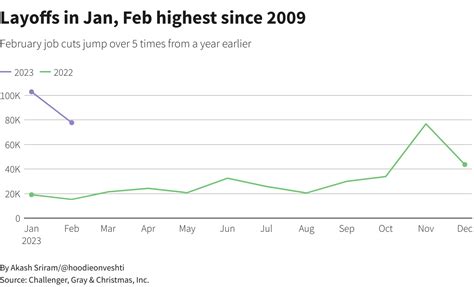
Scottie Pippen blames the proliferation of shoe endorsement deals and the incompetence of shoe companies for a significant number of job losses in the United States. Pippen, a six-time NBA champion with the Chicago Bulls, argues that companies’ focus on athlete endorsements rather than product innovation and quality has led to industry decline and, consequently, unemployment.
Pippen Links Shoe App Incompetence to US Job Losses
Six-time NBA champion Scottie Pippen has publicly stated that the business practices of shoe companies, particularly their emphasis on athlete endorsements and allegedly incompetent management, are contributing to job losses across the United States. Pippen made these remarks during a recent interview, highlighting what he perceives as a critical flaw in the industry’s operational model.
“A lot of Americans lost their jobs over a pair of shoes, and it’s really that simple,” Pippen stated. He elaborated on this point, suggesting that companies are prioritizing marketing through celebrity endorsements over investing in manufacturing and innovation. This focus, according to Pippen, leads to reduced product quality, decreased sales, and eventual layoffs within the industry.
Pippen’s critique stems from his personal experiences with shoe companies and his observation of the broader industry trends. He believes that the current model, heavily reliant on short-term gains through endorsement deals, is unsustainable and detrimental to the long-term health of the American workforce. He also subtly alluded to the rise of digital-first shoe businesses, potentially referring to the increased reliance on online sales platforms and mobile applications, which, if poorly managed, could further impact traditional retail jobs and operational efficiency.
Endorsement Deals vs. Product Quality
Pippen’s argument centers on the trade-off between investing in athlete endorsements and investing in product quality and innovation. He posits that many shoe companies allocate a disproportionate amount of resources to securing endorsement deals with high-profile athletes, leaving less capital available for research and development, manufacturing improvements, and quality control.
“These companies are spending millions on endorsements, but what about the shoes themselves?” Pippen questioned. He argues that consumers are increasingly discerning and are less likely to purchase products solely based on celebrity endorsements if the quality and performance of the shoes are subpar. This disconnect, he believes, ultimately leads to decreased sales and the need for companies to cut costs, often through layoffs.
The practice of athlete endorsements in the shoe industry is not new. Nike, Adidas, and other major brands have long relied on celebrity endorsements to drive sales and enhance brand recognition. Michael Jordan’s partnership with Nike, for example, is one of the most successful and enduring endorsement deals in history. However, Pippen suggests that the scale and intensity of these endorsement deals have reached a point where they are negatively impacting the industry’s overall health.
Industry Response and Counterarguments
While Pippen’s comments have generated significant discussion, the shoe industry’s response has been largely muted. Representatives from major shoe companies have not directly addressed Pippen’s specific allegations, but they often point to their investments in innovation, manufacturing, and job creation.
Some industry analysts argue that athlete endorsements are a necessary component of the competitive landscape. They contend that endorsements help companies stand out in a crowded market and attract consumers who are influenced by celebrity endorsements. Additionally, they argue that shoe companies are constantly innovating and investing in new technologies to improve product quality and performance.
However, critics of the industry’s reliance on endorsements argue that it creates a culture of hype and superficiality, where image and marketing take precedence over substance and quality. They point to instances where highly endorsed shoes have been criticized for their poor construction, lack of durability, or inadequate performance.
Impact on American Jobs
Pippen’s assertion that shoe app incompetence and the focus on endorsements are leading to job losses in the United States raises important questions about the industry’s impact on the American workforce. The shoe industry, like many other manufacturing sectors, has faced challenges in recent decades due to globalization, automation, and changing consumer preferences.
Globalization has led to the outsourcing of manufacturing jobs to countries with lower labor costs. This trend has resulted in the loss of many manufacturing jobs in the United States. Automation has also played a role, as companies invest in new technologies to streamline production processes and reduce the need for human labor.
Changing consumer preferences have also impacted the industry. Consumers are increasingly demanding more sustainable and ethically produced products. This shift has put pressure on companies to adopt more responsible manufacturing practices, which can sometimes lead to higher production costs and, potentially, job losses.
The Role of Shoe Apps and E-commerce
Pippen’s reference to “shoe app incompetence” introduces another layer to the discussion. The rise of e-commerce and mobile applications has transformed the way shoes are bought and sold. While these platforms offer convenience and accessibility to consumers, they also pose challenges for traditional brick-and-mortar retailers.
Many shoe companies have invested heavily in developing their own e-commerce platforms and mobile apps. However, the success of these platforms depends on a variety of factors, including user experience, product selection, customer service, and logistics. If a company’s shoe app is poorly designed, difficult to use, or unreliable, it can negatively impact sales and customer satisfaction.
Furthermore, the shift to e-commerce has led to the closure of many brick-and-mortar stores, resulting in job losses for retail workers. While e-commerce creates new job opportunities in areas such as web development, digital marketing, and logistics, these jobs often require different skills and qualifications than traditional retail positions.
The Broader Economic Context
Pippen’s comments should be viewed within the broader economic context of the United States. The American economy has experienced significant changes in recent decades, including a decline in manufacturing jobs, a rise in the service sector, and increasing income inequality.
The decline in manufacturing jobs has been a major concern for policymakers and economists. Manufacturing jobs tend to offer higher wages and benefits than service sector jobs, and they often provide opportunities for upward mobility. The loss of these jobs has contributed to the widening income gap and the decline of the middle class.
The rise in the service sector has created new job opportunities, but many of these jobs are low-wage and offer limited benefits. Additionally, the service sector is often more vulnerable to economic downturns than the manufacturing sector.
Increasing income inequality has become a major political and social issue in the United States. The gap between the rich and the poor has widened significantly in recent decades, leading to concerns about fairness, opportunity, and social stability.
Potential Solutions and Policy Recommendations
Addressing the issues raised by Pippen requires a multi-faceted approach that involves industry stakeholders, policymakers, and consumers. Some potential solutions and policy recommendations include:
- Investing in Manufacturing Innovation: Encouraging shoe companies to invest in research and development to improve product quality, reduce production costs, and create new manufacturing jobs in the United States. This could involve providing tax incentives, grants, and other forms of support for companies that invest in innovation.
- Supporting Workforce Development: Providing training and education programs to help workers acquire the skills and qualifications needed for jobs in the modern economy. This could involve partnerships between community colleges, vocational schools, and shoe companies to develop training programs that meet the industry’s needs.
- Promoting Sustainable Manufacturing Practices: Encouraging shoe companies to adopt more sustainable manufacturing practices that reduce environmental impact and protect worker rights. This could involve providing incentives for companies that use recycled materials, reduce waste, and improve working conditions.
- Strengthening Consumer Protection Laws: Enacting stronger consumer protection laws to ensure that consumers are not misled by deceptive marketing practices or substandard products. This could involve increasing oversight of athlete endorsements and requiring companies to disclose more information about the quality and performance of their shoes.
- Addressing Income Inequality: Implementing policies to reduce income inequality and create more economic opportunities for all Americans. This could involve raising the minimum wage, expanding access to affordable healthcare and education, and reforming the tax system.
- Improving Shoe App Development Standards: Promoting the adoption of standardized practices for the development and maintenance of shoe apps, focusing on user experience, data security, and reliable performance. This could involve industry collaborations to create benchmarks and best practices for app development.
- Supporting Small Businesses and Entrepreneurship: Fostering an environment that supports small businesses and entrepreneurship in the shoe industry. This could involve providing access to capital, mentorship, and other resources for entrepreneurs who are looking to start their own shoe companies.
The Importance of Consumer Awareness
Ultimately, consumers play a critical role in shaping the future of the shoe industry. By making informed purchasing decisions, consumers can encourage companies to prioritize quality, sustainability, and ethical labor practices over celebrity endorsements and short-term profits. Consumers can also support companies that are committed to creating jobs in the United States and investing in the American workforce.
Conclusion
Scottie Pippen’s comments have sparked a debate about the role of shoe companies in the American economy and the impact of athlete endorsements on the industry. While his assertions may be controversial, they raise important questions about the trade-offs between marketing and innovation, the challenges facing the manufacturing sector, and the need for a more sustainable and equitable economic model. Addressing these issues will require a collaborative effort from industry stakeholders, policymakers, and consumers. It is imperative that the shoe industry refocus its priorities to ensure that its practices contribute positively to the American economy and the well-being of its workforce.
Expanded Context and Deeper Analysis
To truly understand the complexities behind Pippen’s statements, it’s important to delve deeper into the various facets of the shoe industry, including its historical evolution, economic influences, and sociological impact.
-
Historical Perspective: The shoe industry has evolved significantly over the past century. Initially, manufacturing was largely based in the United States and Europe, focusing on craftsmanship and durability. The rise of globalization in the late 20th century shifted production to countries with lower labor costs, leading to a decline in domestic manufacturing jobs. This trend was further exacerbated by automation and technological advancements.
-
Economic Influences: The shoe industry is heavily influenced by macroeconomic factors such as consumer spending, trade policies, and currency exchange rates. Endorsements, while potentially beneficial for driving sales, can also create financial risks if the associated products fail to resonate with consumers. Moreover, the industry’s reliance on global supply chains exposes it to disruptions caused by geopolitical tensions, natural disasters, and pandemics.
-
Sociological Impact: Shoes have long held cultural and symbolic significance. They can represent status, identity, and belonging. The endorsement of athletic shoes by celebrity athletes taps into these associations, creating aspirational desires among consumers. However, this also raises ethical concerns about the exploitation of athletes and the perpetuation of consumerism.
-
The Rise of Sustainable Practices: In recent years, there has been growing awareness of the environmental and social impacts of the shoe industry. Consumers are increasingly demanding products that are made from sustainable materials, produced in ethical working conditions, and have a lower carbon footprint. This has led to the emergence of brands that prioritize sustainability and transparency in their operations.
-
The Tech Integration: Shoe companies are increasingly integrating technology into their products and operations. This includes using 3D printing to create customized shoes, developing apps that track athletic performance, and employing data analytics to optimize supply chains. While these innovations can enhance efficiency and customer satisfaction, they also raise concerns about job displacement and data privacy.
-
The Role of Unions: In the past, labor unions played a significant role in protecting the rights and interests of workers in the shoe industry. However, the decline in union membership in recent decades has weakened their bargaining power, making it more difficult for workers to negotiate fair wages, benefits, and working conditions.
-
The Future of Shoe Retail: The rise of e-commerce has transformed the landscape of shoe retail, but brick-and-mortar stores continue to play an important role. Many consumers still prefer to try on shoes before buying them, and physical stores can offer a more personalized shopping experience. However, traditional retailers need to adapt to changing consumer preferences by offering online shopping options, providing excellent customer service, and creating engaging in-store experiences.
By considering these expanded contextual elements, a more thorough and informed understanding of Pippen’s claims emerges, highlighting the complexities and challenges facing the shoe industry today.
Frequently Asked Questions (FAQ)
1. What is Scottie Pippen’s main argument regarding shoe companies and job losses?
Pippen argues that shoe companies prioritize expensive athlete endorsements over investing in product quality and innovation, leading to decreased sales, layoffs, and ultimately, job losses in the United States. He also alluded to the impact of poorly managed shoe apps contributing to the same problem.
2. Why does Pippen believe athlete endorsements are detrimental to the shoe industry?
Pippen believes that excessive spending on endorsements diverts resources from research and development, manufacturing improvements, and quality control. He argues that consumers are increasingly discerning and are less likely to purchase products solely based on celebrity endorsements if the product quality is lacking.
3. What factors, besides endorsements, contribute to job losses in the shoe industry?
Other factors contributing to job losses include globalization (outsourcing manufacturing to countries with lower labor costs), automation (replacing human labor with technology), changing consumer preferences (demand for sustainable and ethically produced products), and the rise of e-commerce (leading to the closure of brick-and-mortar stores).
4. How has the rise of e-commerce and shoe apps affected the shoe industry and employment?
E-commerce and shoe apps have transformed the way shoes are bought and sold, offering convenience and accessibility to consumers. However, poorly designed or unreliable apps can negatively impact sales. Additionally, the shift to e-commerce has led to the closure of many brick-and-mortar stores, resulting in job losses for retail workers, even though it has created some new job opportunities in logistics and online marketing.
5. What potential solutions can address the issues Pippen raises about the shoe industry?
Potential solutions include investing in manufacturing innovation, supporting workforce development, promoting sustainable manufacturing practices, strengthening consumer protection laws, addressing income inequality, improving shoe app development standards, and supporting small businesses and entrepreneurship in the shoe industry.









